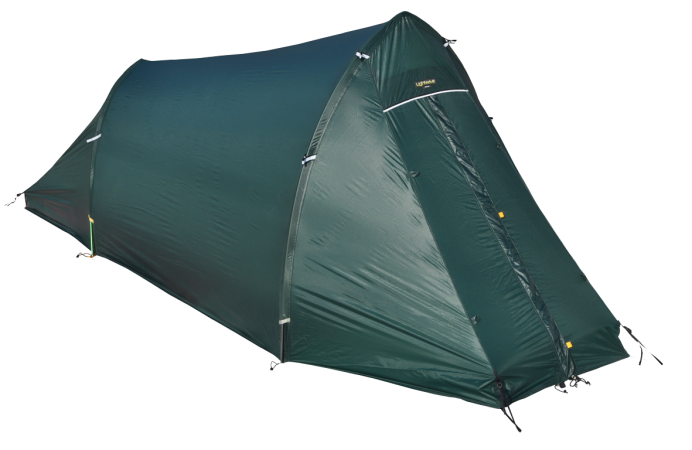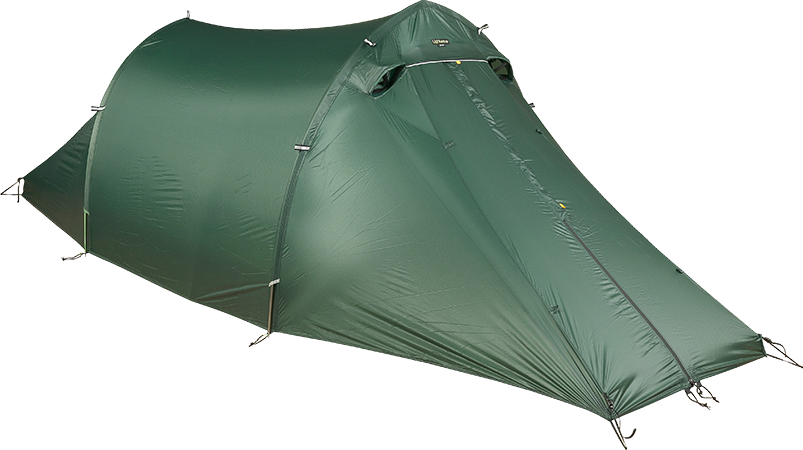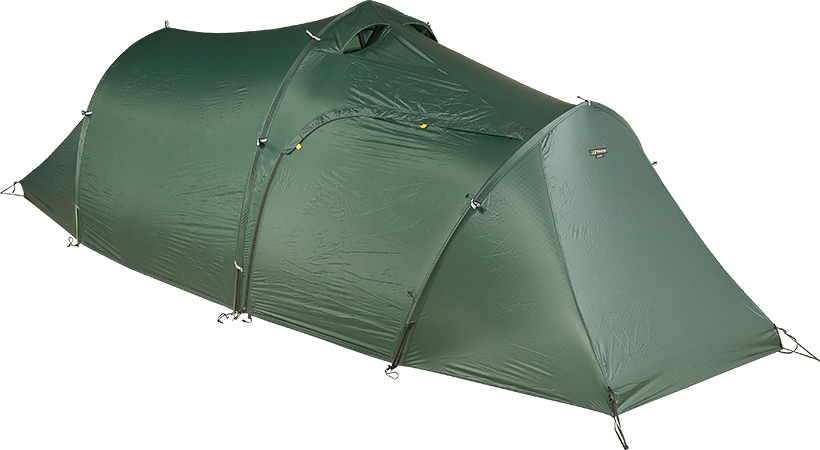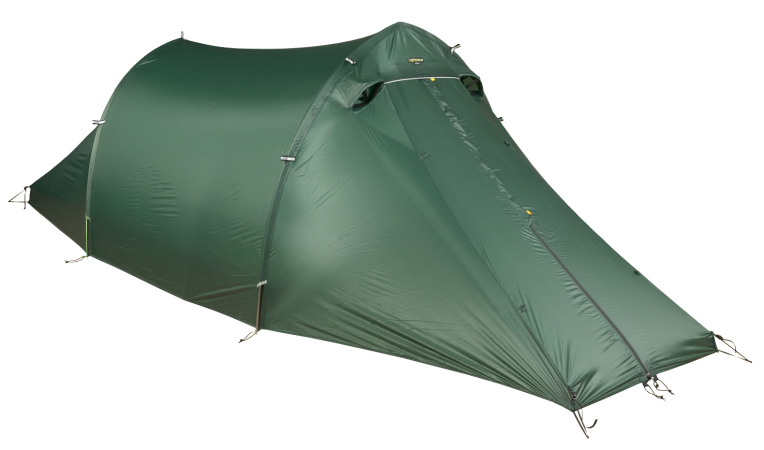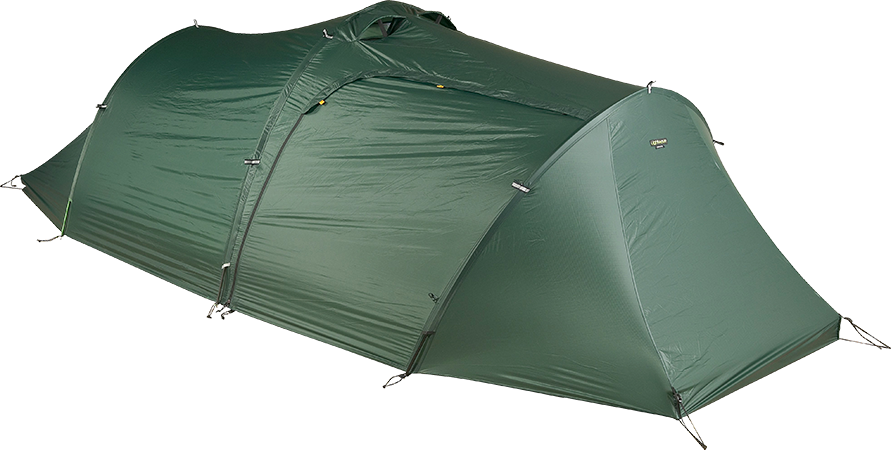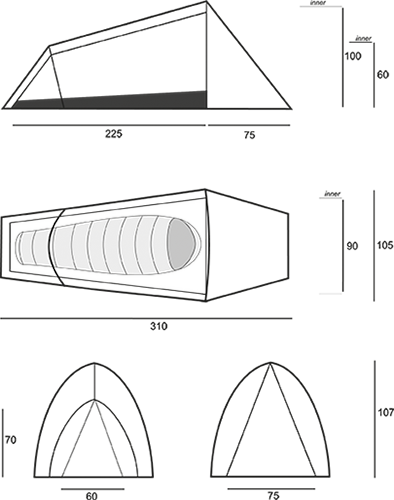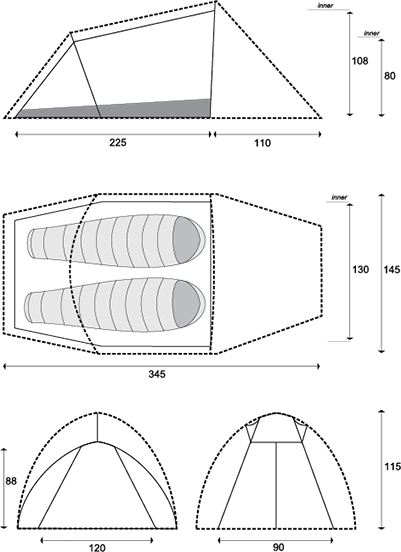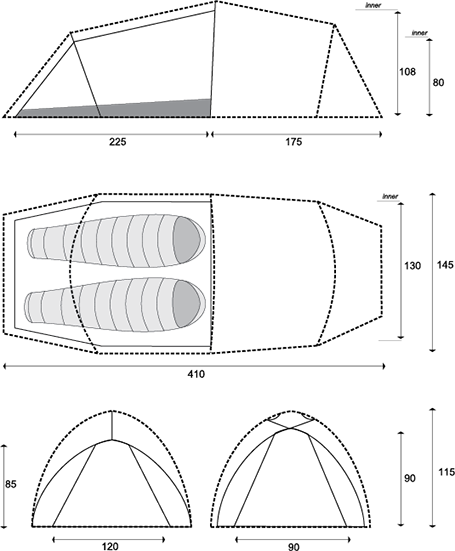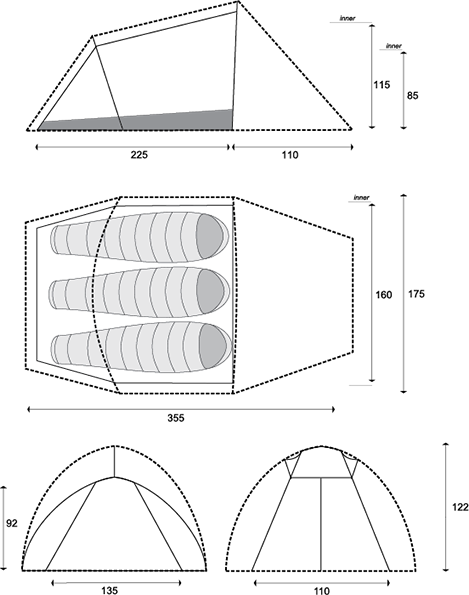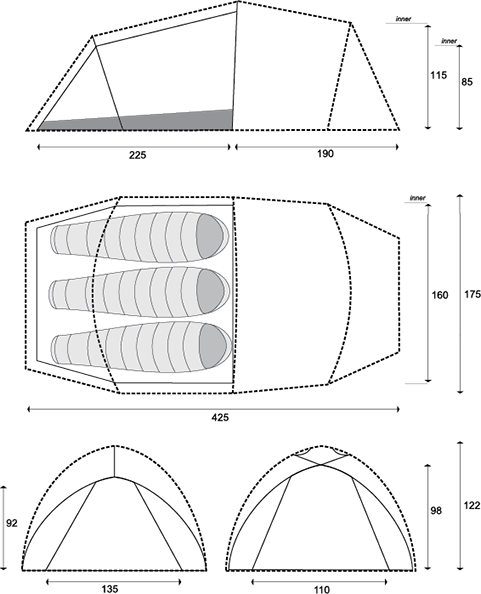Flysheet
60 g/m2, 40d nylon ripstop, silicone-coated both sides, 5000 mm hydrostatic head
The trail flysheet is made from nylon with a yarn thickness of 40 denier. Lightwave has been using this fabric in its robust trek range for the past ten years: there is no better balance between strength (high), weight (low) and price (medium). Like all Lightwave tent flysheets it is silicone-coated on both sides (for water-resistance). Silicone coatings maintain the inherent strength of the fabric, whereas the conventional polyurethane (PU) coatings typically used on most tents reduce the tear strength by up to 70%.
Groundsheet
150 g/m2, 210d nylon oxford, 3-pass PU-coated
5000 mm hydrostatic head, factory-taped seams
The trail groundsheet is made from a truly heavyweight 200-denier nylon, which is twice the denier (yarn thickness) of most groundsheet fabrics and makes it exceptionally tough. Equally important, however, is the quality of the application of the polyurethane coating for durable water-resistance (DWR).
Inner canopy
43 g/m2, 40d nylon ripstop, DWR treated
Poles
Yunan 9.00mm 7001-T6 aluminium alloy
Trail tents use the workhorse 7001-T6 aluminium alloy that is the standard pole-set material for the vast majority of lightweight tents. The reason is simple – 7001-T6 aluminium alloy is very resilient, extremely well-proven and carries a very small weight penalty over marginally lighter, stiffer alloys.
Pegs
Lightning pegs, 11 g each, square section
Wavelight pegs, 12 g each, corkscrew design
Pegs are very important – without them, no tent could withstand anything more than the slightest breeze. Lightwave supplies two different pegs with the trail tents to ensure they can be secured in all ground conditions, a critical factor for tunnel tents as they are completely dependant upon solid anchors at front and rear.
Guylines
3.00 mm nylon, 3 m length, Linelok adjusters
Trail guylines are made of standard 3.00 mm nylon cord with a reflective fleck woven into it. Their Linelok adjusters mean they are easy to tension, even with gloves on.
